#Pablo Cuevas
Text
Been thinking about the Frankenstein ballet again recently and ouugughh the people who play victor are always so gorgeous like what the fuck




Frederico Bonelli as Victor!!! He's the original cast for him I believe, since he played him in the recorded show



Tristan Dyer as Victor OH MY GODDD hes so,,,,,just,,,heshsso,,shehs

ALEXANDER CAMPBELL AS VICTOR☝️☝️☝️❗❗❗ Alexander Campbell plays Henry in the original recorded version of the ballet and he plays Victor in another version hes SO silly🙏🙏🙏


Annnddd José Pablo Castro Cuevas as Victor!!!! He's literally so gorgeous AND Amanda Assucena as Elizabeth shes so beautiful im WAHAHHHSHAG
#for frederico bonelli literally being in the official recording i can hardly find any good quality photos of him💀#anyways i ADORE mexican victor cause it just makes him more like me#im literally hispanic victor frankenstein#I LOVE THE FRANKENSTEIN BALLET#i wish there were more videos of other performances other than the one with frederico bonelli💔💔💔#they're all soooo gorgeous#maybe I'll make a post with the other characters and their dancers like Henry Elizabeth and The Creature#cause their actors are also always gorgeous#sighhh#frankenstein#victor frankenstein#henry clerval#elizabeth lavenza#the creature#frankensteins monster#the frankenstein ballet#frankenstein ballet#the royal opera house#the royal ballet#frankenstein from the royal ballet#frederico bonelli#alexander campbell#josé pablo castro cuevas#Tristan dyer#amanda assucena#ballet#royal ballet#theres lots of other actors but these 4 r my faves🙏🙏#i need to watch the ballet again GODDDD
147 notes
·
View notes
Text
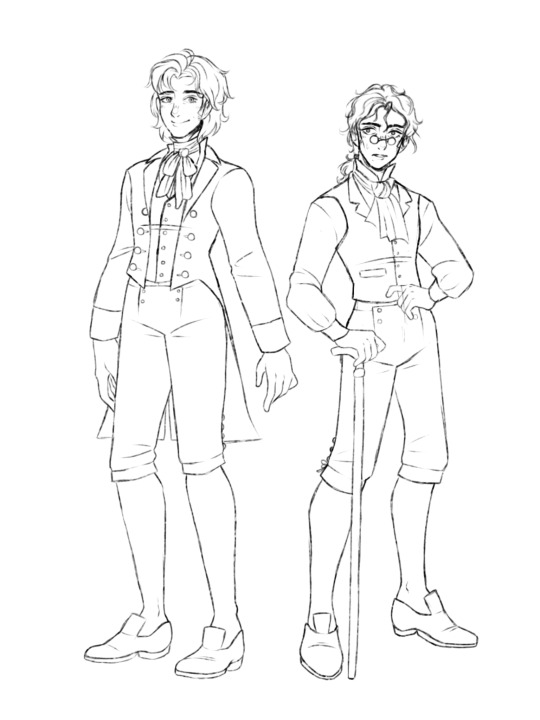
I got a new pen display today! So I’m going to attempt to line and colour this sketch tonight while I finish watching Frankenstein.
#my phone is much too small for me to draw on anymore#henry clerval#victor frankenstein#frankenstein#frankenstein fanart#art wip#sketch#my victor is based off of josé pablo castro cuevas#and my henry is designed after dan stevens#also i can’t recall the last time i drew normal clothes#i always draw regency and victorian era fashion#AND nearly all my ocs that i give a damn about are set in the 1800s
20 notes
·
View notes
Note
Can you do a web weave about the joy of creativity and like making art?




i love this idea but i really struggled with finding quotes for this one :// i hope this is close to what you were looking for !!
Stephen King / Cueva de las Manos photography by Petr Kratochivla / Pablo Picasso / @godshaped (via @ytilaremehpe-sselhtaed)
#on art#on creating#on humanity#web weave#web weaving#poetry parallels#poetry compilation#stephen king#cueva de las manos#petr kratochivla#pablo picasso#words#poem#spilled poetry#spilled ink#dark academia#dark academia poetry#poetry#spilled thoughts#dark academia quote#writing#literature#spilled feelings#spilled words
107 notes
·
View notes
Text

Jose Pablo Castro Cuevas | Zach Manske | Joffery Ballet | Photo by Cheryl Mann
#jose pablo castro cuevas#josé pablo castro cuevas#joffery ballet#white tights#balletphotography#ballet slippers
34 notes
·
View notes
Text
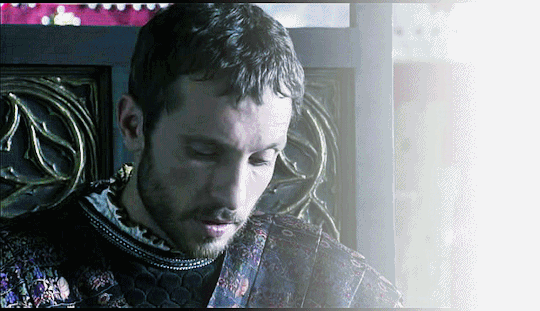



I S A B E L
Pablo Derqui as Enrique IV of Castile
William Miller as Beltrán de la Cueva
#isabel tve#pablo derqui#william miller#enrique iv de castilla#henry iv of castile#Beltrán de la Cueva
12 notes
·
View notes
Text
I was recently awoken in the night by lions, their eyes glaring in the dark from blunt rectangular faces as they stalked bison through an ancient, arid grassland. As I came to, however, I realised I was not about to be eaten alive. This was simply one of the perils of spending too much time looking at images of cave art on the web.
Cave artists could do it all. The faces of the animals they painted are exquisite portraits, while their bodies are rendered in perfect perspective. But wait – weren’t these supposed to be the great achievements of European art? After all, in his classic study The Story of Art, EH Gombrich tells how western art took off when the ancient Greeks learned how to show movement, that the perspective was discovered in 15th-century Europe, and that the communication of sensation rather than the seen was the gift of the impressionists. Gombrich had probably not seen much cave art. Lascaux, a series of caves in the French Dordogne, was a recent discovery when he published his book in 1950 – and Chauvet, also in France, wouldn’t be found until 1994.
“Since Lascaux,” Picasso is supposed to have said after he saw the famous ice age cave paintings in 1940, “we have invented nothing.” Sadly, the quote is hard to source. But he should have said it, because it fits the insight that pervades his work, with its appetite for influences from ancient Iberian statuettes to African masks. Namely, that art’s story is not a trajectory of ascent, but more of a looping spiral, constantly retracing its steps.
When the pandemic started, the Guardian switched its Masterclasses online and challenged me, one of its tutors, to come up with a theme. “OK,” I thought. “What about a virtual trip through the whole of art history?” But, like Picasso, I got stuck at the very beginning. And Picasso had a point: the more you look at images from the walls of Lascaux and Chauvet, the more you realise art really has invented nothing since those days at the end of the ice age.
It is hard to take in how comprehensively these ancient artists anticipated the future. It takes time to fully absorb this – say, a year in and occasionally out of lockdown. I’ve visited, in the flesh, some of the most spectacular caves: Cougnac, Pech Merle, Niaux. But, in the past 12 months, I have conducted an online odyssey into both the caves I’ve been to and those I’ll probably never see. (Chauvet and Lascaux are permanently closed while others can be reached only by experienced divers.) In that time, I have come to fully appreciate the stunning nature of this primordial creativity.
Cave art makes art history pretty much obsolete. That tale of upward ascent – of European masters gradually mastering reality, from the Parthenon frieze to the eyes of Rembrandt – is simply not true. It turns out that perspective, shading, movement and expressiveness are not, after all, hard-won western discoveries. Rather, they are part of the toolkit of the human mind.
How does ice age art reveal this? We – homo sapiens – evolved in Africa no more than 300,000 years ago. There is evidence of art, potentially even paintings, in South Africa up to 100,000 years ago. Then, 30,000 years ago, a stunningly accomplished artistic culture exploded on to the scene, at least according to what we have been able to find. This took place in the most recent of Earth’s ice ages, a time when Europe was anything but hospitable. Yet cave art shows why humans migrated there: to hunt mammoth, rhinoceros, hippopotamus and deer. The tradition of cave painting continued up to the end of that ice age, about 10,000 years ago.
To get this in perspective, the Great Pyramid at Giza dates from 4,600 years ago; the Parthenon sculptures from 2,650 years ago; the plaques from the Oba’s palace in Benin from up to 600 years ago; Hokusai’s Great Wave from two centuries ago. Cave art exists on a different time scale – so different that art historians tend to discount it, leaving its significance to evolutionary scientists. They’re wrong. For this art contains the key to a more human and complete story of art.
If ice age people who hunted and foraged and had no concept of literacy could draw and paint like Leonardo da Vinci, that leaves the narrative of art as an ascent towards noting but perfection. In fact, ice age artists had a lot in common with the Renaissance genius. For one thing, they shared an obsession with depicting animals. The joy of exploring cave art in lockdown, online and in books, was to see all these creatures closely: lions stalking bison, an engraving of an owl, a relief of a pike, a painting of a duck on a pole. One of my favourites is a charcoal drawing of a flatfish, about 1.5 metres long, in La Pileta cave in Andalusia. You can see its curious turned-over face, that touching evolutionary evidence that plaice and sole adapted from vertically swimming fish, flipping over their bodies to live on the seabed.
So here is a recently evolved homo sapiens depicting a strikingly evolved fellow animal. That’s what makes cave art so entrancing: it records the moment consciousness makes an entrance. Before 33,000 years ago, all our evidence of the natural world comes from fossils, which reveal the story of life from single-celled creatures to dinosaurs to mammals. Then suddenly humans appear – and they are doing portraits. As a consequence, the extinct animals of the ice age don’t only exist as fossils, or frozen remains from Siberia. They also live in art.
If depiction is not a slowly accumulated skill, built up by western artists over the centuries, but rather something that came naturally to the first humans, then art’s history cannot be a progress or ascent. Instead, it is story of choices. And a lot of those have to do with identity. Egyptian art, Aztec art and the sculptures of Easter Island all show strong powers of observation, but choose to embed that eye for reality within a formalised “style”.
Style exists to define – from the national to the religious, right down to the level of personal identity. We’re ancient Egyptians and we walk sideways with our faces turned – got a problem with that? Cave art has stylistic traits, too. Hand prints keep recurring, along with red dots and geometrical patterns. As well as pointing to all the ways later humans would use abstract symbols to define themselves, they look forward to modern art.
While my virtual cave art journey was fun, the real thing is unforgettable. A few years ago, my family and I visited Niaux, a painted cave in the Pyrenees. Niaux has a spectacular location, overlooking a mountain valley. The people who created the art it contains lived on the far side of the valley. They must have seen Niaux, across the divide, as a special place, akin to a temple or cathedral. Its imposing natural entrance, a soaring arch of overhanging stone, adds to its sacred aura.
To get to the art, you have to walk through long, sometimes narrow passages, lit only by your own helmet lamp. The artists of Niaux, we can deduce, did not intend the experience of seeing their art to be easy. After these passageways, you suddenly emerge into a grand, scary chamber, now called the Salon Noir. There on its walls are bison drawn in black charcoal – but with humanoid faces. They are mythic beasts, the ancestors of Picasso’s Minotaur.
When we emerged from the cave, our taxi hadn’t turned up. The site was closing and our phones weren’t working. But we weren’t worried. Maybe, echoing one theory about cave artists, we were high on oxygen deprivation. Or maybe this was one art pilgrimage that was worth getting stuck up a mountain for.
Across the planet, across the centuries, there are infinite varieties of art to look at and marvel over. But there is nothing better than this. That is why, with all the choice made possible online, I am continually drawn back to the cave.
#studyblr#history#prehistory#art#art history#prehistoric art#early humans#animals#evolution#paleolithic#magdalenian#france#spain#lascaux#chauvet cave#cueva de la pileta#cave of niaux#ernst gombrich#pablo picasso#fish#flatfish#plaice#sole
0 notes
Text
¿Qué hubiera sido de Pedro después de haber negado a Cristo, se hubiera convencido de que no era digno de predicar el evangelio? ¿Qué hubiera sido de Santiago si se hubiera condenado por no haberle creído a su hermano tantos años? ¿Qué hubiera sido de Elías si se hubiera quedado en la cueva pensando que su debilidad y cobardía eran su identidad delante de Dios? ¿Qué hubiera pasado con David si su mirada hubiese permanecido en sus tropiezos? ¿Qué hubiera sido de Pablo si por su pasado se hubiera frenado? ¡Gracias a Dios por la obra de Cristo! Qué descanso es para nosotros el poder mirar a esa cruz y saber que todo fue satisfecho ahí. No se trata de nuestros méritos, credenciales ni éxitos, sino que se trata de su obediencia, sacrificio y amor.
Si te encuentras en un estado de desánimo, abre tu Biblia, únete al club tan privilegiado de ser una vasija rota siendo usada por el Creador del Universo. Club de vasijas rotas que fueron restauradas por el alfarero. El caminar cristiano es en ocasiones por veredas tranquilas, otras por terrenos rocosos, pero podemos estar seguras de que sea cual sea nuestro camino, nuestro destino está en la morada que fue preparada por Aquel que nos ama.
“Clamé: «¡Me resbalo!», pero tu amor inagotable, oh Señor, me sostuvo. Cuando mi mente se llenó de dudas, tu consuelo renovó mi esperanza y mi alegría.”
Salmos 94:18-19
— Créditos a quién corresponda

#diosesamor#diosesbueno#dios#diosesfiel#diostebendiga#bibleversoftheday#bible scripture#palabradedios#palabradevida#eva
8 notes
·
View notes
Text
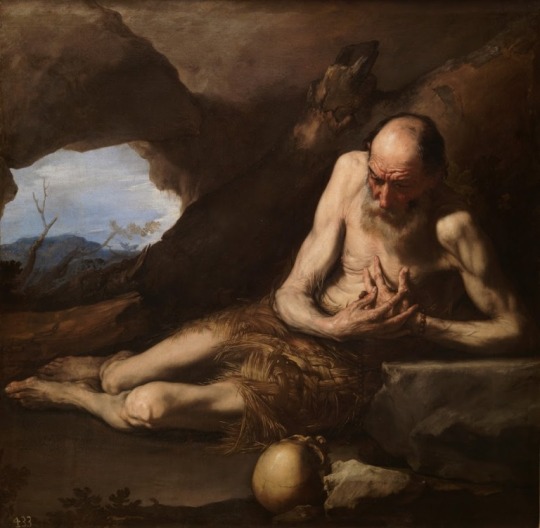
Las ideas contrarreformistas aportarán a la iconografía católica grandes dosis de piedad, misticismo y penitencia. San Pablo, el primer ermitaño, medita ante una calavera en la soledad de su retiro es un tema recurrente en la producción artística de José de Ribera.(1640)
El santo eremita aparece en una postura forzada, con las piernas dispuestas en profundidad y volcándose hacia primer término, acodado sobre un sillar que simboliza la penitencia. Ante él encontramos la calavera que alegoriza la fugacidad de la vida. La figura se encuentra en una cueva que se abre al fondo para permitirnos contemplar un ligero paisaje mientras que en el interior se aprecia un tronco de árbol, sobre el que se recorta la figura del santo.
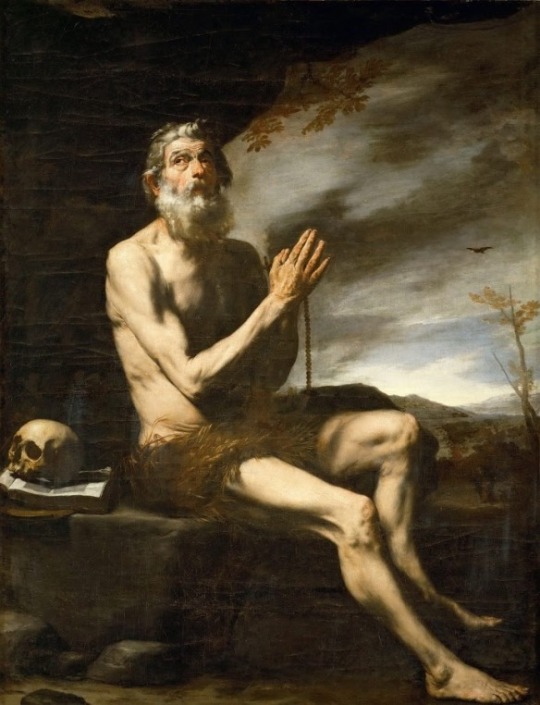
13 notes
·
View notes
Text

Domingo| Devocional
#NO_ESTÁS_SOLO
Porque Jehová tu Dios es quien va contigo; no te dejará ni te desamparará.
—Deuteronomio 31:6, Rv'60
La soledad no hace acepción de personas. Invade tanto el palacio como la choza. Muchos se vuelven bebedores por la soledad. Otros pierden la cordura por la soledad. Muchos se suicidan por la desesperación de la soledad. Miles han encontrado en Cristo la respuesta a su soledad. Los niños hebreos no estaban solos cuando fueron arrojados al horno de fuego de la persecución. Había Uno con ellos como el Hijo de Dios. Moisés no estaba solo en el desierto de Madián cuando Dios vino a consolarlo y llamarlo a un ministerio más amplio. Elías no estaba solo en la cueva cuando Dios se acercó y le habló con una voz suave y apacible. Pablo y Silas no estaban solos en la cárcel de Filipos cuando Dios descendió y les dio un cántico a medianoche. Quienquiera que seas, Cristo puede darte consuelo y compañía.
Oración: Padre Celestial, siempre que empiece a sentirme solo, ayúdame a recordar que Tú siempre estás conmigo. A veces el camino parece oscuro, pero Tú sigues ahí. Gracias, Señor.
3 notes
·
View notes
Text
“La cueva a la que temes entrar guarda el tesoro que buscas”
Joseph Campbell

Joseph John Campbell, fue un mitólogo, escritor y profesor estadounidense nacido en White Plains NY. En octubre de 1904. Más conocido por su trabajo sobre mitología y religión comparada.
Su basta obra abarca muchos aspectos de la experiencia humana.
Primeros años.
Joseph Campbell nació en el seno de una familia católica de clase media.
Siendo niño, quedó fascinado con la cultura nativa americana después de que su padre lo llevara al museo Americano de Historia Natural en NY. En donde pudo ver colecciones de artefactos nativos americanos.
Estudió biología y matemáticas pero decidió que prefería las humanidades. Fue transferido al Columbia University en donde estudió literatura inglesa en 1925 y literatura medieval en 1927.
Campbell fue también un personaje destacado en eventos de atletismo.
Historia
En 1924 durante un viaje a Europa con sus padres, conoció a Jiddu Krishnamurti un conocido pensador y filósofo espiritual hindú, a partir de lo cual dejó de ser un católico practicante.
En 1927 Joseph obtuvo una beca para estudiar en Europa en donde estudió francés antiguo, provenzal y sánscrito en la Universidad de París, y en la Universidad de Munich en Alemania.
Durante este periodo fue influenciado por la llamada Generación perdida, un momento de enorme innovación intelectual y artística, en donde particularmente se vió entusiasmado por la obra de Paul Klee y Pablo Picasso en lo artístico y por las nuevas ideas surgidas del psicoanálisis de Sigmund Freud y Carl Gustav Jung.
Durante la época de la Gran Depresión, Campbell se dedicó a la lectura y el estudio independiente y en 1931 viajó a California en donde entablaría una gran amistad con John Steinbeck y su esposa Carol.
Los estudios independientes de Campbell lo dirigieron a una mayor exploración de las ideas del psiquiatra suizo Carl Jung de quien editaría los primeros documentos de sus conferencias anuales, y ayudando a formar la Bollinger, Series de libros de psicología, antropología y mitología.
A principios de la Segunda Guerra mundial entabló amistad con el indólogo y lingüista alemán Heinrich Zimmer quien a la muerte de este Joseph se encargaría de editar y publicar póstumamente su obra.
Durante un año sabático en 1955 Joseph Campbell viajo a la India y a Japón, en donde la profunda influencia en la religion y el mito de Asia lo llevó a la necesidad de enseñar mitología comparada de forma no académica.
Muerte
Joseph Campbell murió a la edad de 83 años en octubre de 1987 en su casa de Honolulu Hawai por complicaciones de Cáncer de Esófago.
Fue un firme creyente de la unidad de la conciencia humana y su expresión poética a través de la mitología, y acuñó el término “monomito”, o también llamado el “viaje del héroe” a un patrón básico del hombre en todas las culturas para definir el modelo básico de muchos relatos épicos de todo el mundo.
Fuente: Wikipedia
#estados unidos#joseph campbell#citas de escritores#escritores#frases de escritores#citas de la vida#citas de reflexion#frases de reflexion#notas de vida
6 notes
·
View notes
Text

José Pablo Castro Cuevas | Amanda Assucena | The Joffrey Ballet | Photo by Cheryl Mann
#josé pablo castro cuevas#amanda assucena#balletphotography#grey tights#stage boots#ballet stage boots#ballerina#joffrey ballet
25 notes
·
View notes
Text
La soledad
Existen personas que llegan a la conclusión "la soledad es mi mejor compañía" cuando se enfrentan a las decepciones de la vida, sin embargo, aquellos que conocen a Cristo pueden afirmar "la intimidad es mi mejor aliada, ya que Dios es mi mejor compañía". Tenemos ejemplos claros de esto: Pablo escribió epístolas desde celdas y David compuso hermosos salmos desde cuevas, a pesar de encontrarse en lugares donde parecía no haber compañía, estos textos fueron inspirados porque comprendieron que debemos cambiar nuestra percepción de la soledad y convertirla en intimidad con Jesucristo, ya que nunca estamos verdaderamente solos.

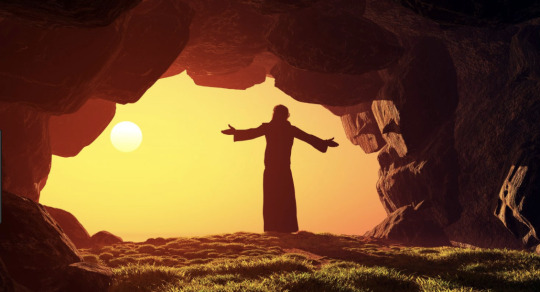
14 notes
·
View notes
Text
TRIBUS BEREBERES CANARII
Nuestro gran Pablo de Lucas nos hace un repaso de donde venían nuestros antepasados canarios "Canarii" los descendientes de la isla de Canaria actual isla de Gran Canaria también llamada Tamaran "la tierra de los hombres valientes"
Pablo Deluca
Aparte del poblamiento, más numeroso y tardío, de Canarias llevado a cabo por el Imperio romano por medio de la “deportatio”, como castigo a las tribus bereberes “canarii” en las estribaciones del Alto Altas (Oued Guir), entre el s.I a.C. y el s.I. d.C., (A. Tejera, J.J. Jimenez et al., 1992), no debemos dejar de señalar otros posibles poblamientos anteriores a la Era. Algunos investigadores sostienen la hipótesis de que los feno-púnicos vendrían a explotar las pesquerías de túnidos y elaborar el “garum” en factorías establecidas en las islas, para cuyo abastecimiento traerían pastores y agricultores norteafricanos (R. González Antón et al., 1996). Otros autores señalan-en la misma línea-la posibilidad de un poblamiento de algunos otros grupos bereberes desde territorios de la Tamazgha continental controlados por Cartago (antigua Numidia, Tunisia y Libia, principalmente).
Los yacimientos de Buenavista (Lanzarote, s.X. a.C., J. Farrujia, 2019); Cueva de la Arena, Barranco Hondo (Tenerife, IV estrato, s.VI a.C., en 540 a.C, Pilar Acosta-M. Pellicer, 1971); Cueva de los Guanches (Icod, Tenerife, VII sepultura, 820 a.C., A. Mederos-G. Escribano, 2002); Cueva de la Palmera (La Palma, s.III a.C., P. Atoche, 1999), apuntan una cronología que abarca desde principios hasta finales del 1º milenio a.C., en el contexto de un poblamiento de tipo comercial, posiblemente llevado a cabo por los feno-púnicos en sus fases de precolonización y colonización. En el caso de la cerámica encontrada en Buenavista, esta pudo utilizarse para el transporte y almacenamiento de alimentos, lo que nos sugiere un contacto comercial frecuente con el Mediterráneo y el denominado “Círculo del Estrecho”.
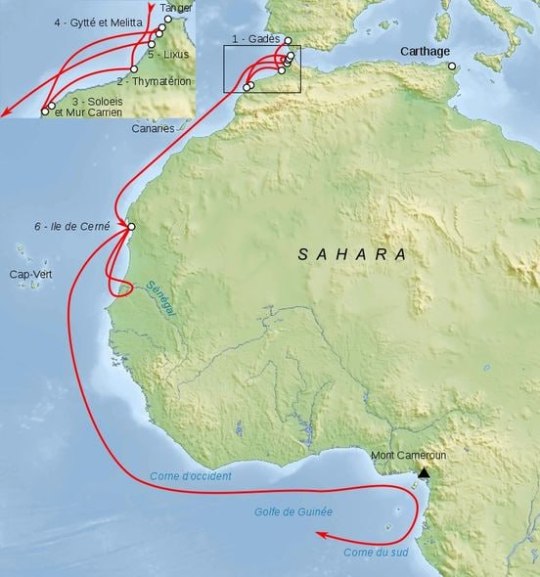



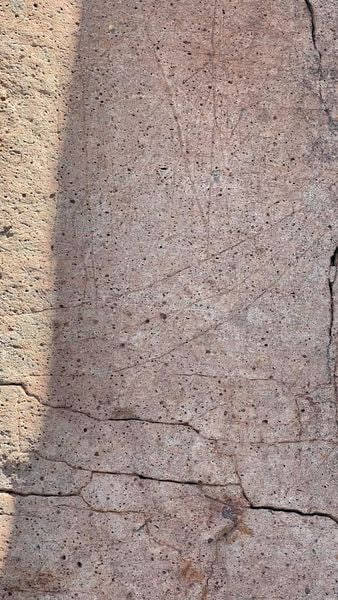

#pablo deluca#antropology#archeaology#amazigh#africa#afrique#aborigenous#indigenous#history#culture#genocide#nativos#united nations#international criminal court#cour penal international#corte penal internacional#antropologia#arqueología#aborigenes#indigenas#historia#cultura#genocidio#native#naciones unidas#canarias tiene identidad cultural propia#canarias la colonia mas antigua del mundo#descolonizacion de canarias#islas canarias#canarias
14 notes
·
View notes
Text
1 SAMUEL 18:6-11
David, el fugitivo
A lo largo de esta semana hemos reflexionando sobre David: su carácter y personalidad, roles y responsabilidades, victorias y fracasos. ¡Es realmente maravilloso que a través de sus experiencias podamos extraer valiosas lecciones de vida!
En el devocional de ayer, vimos cómo David se convirtió en héroe y valiente guerrero en Israel. En cierta ocasión, Saúl y David regresaron de una batalla y las mujeres cantaron que Saul mató a miles pero David a diez mil. Esto provocó la ira de Saul y que la envidia dominara su corazón hasta el punto de perseguirlo. Desde 1 Samuel capítulo 18, David huyó constantemente, ocultándose en cuevas y desiertos, esquivando siempre a Saúl. Durante más de diez años, David sufrió y muchos salmos son el reflejo de su clamor a Dios.
Es importante recalcar que Dios entregó a Saúl en manos de David por dos ocasiones, pero David, perseguido injustamente, no tocó al ungido del Señor. No se vengó ni hizo justicia por su cuenta, él eligió la obediencia sobre el provecho, subordinándose a Dios en lugar de actuar por su propio interés para alcanzar el trono.
Parecía que David iba de mal en peor, pero internamente ocurría todo lo contrario. En ese periodo de sufrimiento, él creció espiritualmente, su fe y confianza en Dios se volvieron más fuertes. En medio del dolor y el desierto, David conoció a Dios de una manera más profunda. El Señor fue su fortaleza en la debilidad, alegría en la tristeza, refugio en la fuga, y escudo y salvación frente al enemigo.
¡Esto es lo que necesitamos! Experimentar al Señor, de modo que él sea todo para nosotros. Pero, a menudo, esto solo ocurre cuando atravesamos por dificultades y sufrimiento, cuando somos injustamente acusados, perseguidos, rechazados y despreciados.
Dios prepara a sus grandes santos para su servicio a través del sufrimiento, donde los moldea y perfecciona. Ejemplo de ello son David, José, Moisés, Job, Jeremías y el apóstol Pablo, entre otros.
Es importante destacar que ninguno de ellos, ni David se quejaron ni culparon a Dios por sus adversidades, sino que se sometieron a las circunstancias permitidas por Dios.
2 notes
·
View notes

